
|
|
| Celeb Tattoos | Facts & Stats | Designs & Symbols | History | Culture | Links | Tattoo Galleries | Contact | |
|
ANCIENT TATTOOS: Theories of Heaven and Earth Article © 2009 PJ Reece Picti, Pictus, Pingere We have hard evidence upon which to base our speculations about the Pazyryk horsemen and their fabulous tattoos, but the Celts who lived during the same era, 2500 years ago, didn't leave us much to play with. Without the written Roman accounts that followed their invasion of Britain, we would know next to nothing. Julius Caesar wrote (in 50 BCE), "All Britons paint themselves with woad, which turns the skin a bluish-green colour, hence their appearance is all the more horrific in battle." Modern attempts to tattoo with woad have failed, but perhaps the experiments weren't vigourous enough. John A. Rush in his Spiritual Tattoo: A Cultural History describes rendering the leaves of the plant Isatis tinctoria, a process that involves many dilutions with water and urine to precipitate the fine blue 'indigo' sediment. Virtually insoluble in water, alcohol, ether or diluted acids, the resulting indigo has antibacterial qualities. If the Celts didn't prick the woad into the skin as a tattoo, perhaps the blue dye was a kind of pro-active first-aid applied in advance of combat.
The name 'Picts' is more than enough to suggest that body modification was a national pastime. Roman soldiers spoke of a northern tribe that they termed 'Picti', meaning 'the painted people'. ('Pictus' is Latin, the past participle for pingere, 'to paint'.) Two hundred years after the Romans left Britain, Herodotus wrote (what were his sources?) about the Picts drawing 'figures of animals or symbols on their skin by pressing hot iron onto their limbs, causing great pain, and over this they rub the sap of a plant.' The very name 'Britannia' is said to stem from the Celtic word for 'land of the painted people'. From there, the evidence is perhaps even less reliable -- the lyrics of a poet writing for the Roman court (circa 400 CE):
Or does 'Pict' derive from the name of the iron instrument with which the naked blue warriors applied their skin ink? The Picts left us with a few cryptically inscribed standing stones -- and a lot of questions. Ancient tattoos would seem to have been the exclusive domain of the warrior classes, but there is a culture where the evidence points to tattooing as an exclusively female phenomenon. Ancient Egypt
On her arms and thighs, Amunet displayed tattooed parallel lines, and on her abdomen, pelvis and pubic regions were elliptical patterns, which scholars didn't hesitate to identify as 'carnal' in nature. Such designs were familiar to archeologists who had studied ancient figurines with similar markings, often found with bodies in tombs. 'Brides of the dead' they were called, some company for the deceased as they entered the afterlife, perhaps. Or to encourage the sexual energy of the deceased, ensuring his resurrection. Subsequent mummies revealed similar tattoos, mostly non-pictorial groupings of dots, dashes, and parallel lines. From similar tattoos in neighbouring cultures in North Africa and the Middle East, those seemingly random and meaningless marks have come to be identified with fertility and the primal female power of the universe. Little wonder that Amunet, priestess of Hathor, would have adopted those marks for power and protection. Amunet was originally dismissed by archeologists as 'probably a royal concubine', since a tattooed woman in the West was generally classified as a prostitute. Or perhaps the tattooed amulets were meant as protection against sexually transmitted disease. A more enlightened attitude suggests a different interpretation -- that the abdominal tattoos served as amulet during pregnancy and birth. Many of the female mummies reveal another tattoo on the upper thigh, this one not an abstraction but clearly an image of the demi-god Bes, a lascivious little male god devoted to women's concerns. He appears in many ancient Egyptian paintings of dancers and musicians, who adopted him as their patron saint. The ancient Egyptian evidence runs against the grain of most tattoo cultures around the world -- that tattooing has been a predominantly male domain. It seems that in Egypt, where no male mummies have yet been found bearing tattoos, women were the keepers of the tattoo tradition. Cate Lineberry, writing for Smithsonian.com, suggests that elder women in the community would have been the tattoo artists as well, just as they were in 19th century Egypt when the process was witnessed first-hand:
Female Nubian mummies dating back to 400 BC have been found with that same 'Bes' tattoo. Berbers and Bedouins in North Africa hold to tattoo traditions that resemble those of ancient Egypt, and once again it proves to be a female art. The Alaskan women of St. Lawrence Island Further examples of female dominance in ancient tattoo art are found above the Arctic Circle in Alaska. There, the Yupik elders speak eagerly of their dying tattoo traditions.
These unique tattoos would have served to identify family or clan membership, but they were also applied for medicinal reasons. Like the Pazyryk chieftain, who had a series of tattooed dots up the spine, the Yupik seem to have deployed a similar acupuncture practice on ailing joints. But therapeutic tattoos were likely few compared to those stitched across the face for more social purposes. A Russian priest was on the spot in 1830 and recorded his observations:
South American Mummies -- Older than Ötzi Mummified evidence of the stitched-in tattoo comes also from the ancient Chimú people of Peru. Excavated burial sites have proved to be almost 1000 years old, and suggest that up to 30% of the population were tattooed. Once again, it appears as if women dominated the art of tattoo. The same plant dye that served for tattooing was also applied like paint to skulls taken in combat by headhunting tribes in the region. The dye was believed to provide protection from evil spirits, and more particularly the spirit of the recently beheaded. (See, "Many Stitches for Life: The Antiquity of Thread and Needle Tattooing" by Lars Krutak.) Not so far away, on a beach in arid northern Chile, an archeological site is home to mummies excavated in 1919. These were people of the Chinchorro culture, hunters and gatherers living from 5000 to 500 BC. In fact, the oldest mummy has been dated at 7,810 years old -- the oldest example of intentionally mummified human remains.
According to Dr. Marvin Allison, who has conducted thousands of mummy autopsies in South America, at least one of the male specimens showed a small stitched-in tattoo on his upper lip - a discovery that establishes the Chilean Chinchorro example as our pre-eminent historical tattoo. This tattoo predates Ötzi the Iceman's tattoos by 1500 years. Notable, too, is the mummification practice of the Chinchorro -- more complex than the Egyptian's yet almost three thousand years older. They eviscerated the corpses, saving the skin and bones which they re-assembled with the help of sticks and clay. Muscles were recreated with bundles of reeds and grasses, after which the deceased was 'reupholstered' with his original skin. Repair work was accomplished with sea lion skin. A mask of clay was incised with eye slits and modeled to lend the impression of a person peacefully sleeping. Then the 'sculpture' was covered with a coat of black manganese. Indeed, some of these mummies looked like works of art. Nor were they buried immediately, but continued to hang around the village, propped up in groups. Paleopathologists like Dr. Allison at the Virginia Commonwealth University believe that the dead might have been revered as a valuable link between this world and the next. Haida On the Pacific coast of Canada, we encounter the most artistically accomplished indigenous people on the North American continent -- the Haida. Their totem poles, war canoes, and longhouses were adorned with the totemic designs that have become so well known in the art world today. Anthropologist, James A. Swan, studying the Haida 150 years ago, noted that the Haida's bold tattoos were similar to the carvings depicted on the monumental art that graced the home of the chief. But which came first -- tattoos or totem poles? It has been hypothesized that the stylized animal totems that appear on the Haida's famous poles, carvings, and prints actually started out as tattoos, ancient designs of family crests used for identification.
It is generally believed that no other indigenous people were as heavily tattooed as the Haida -- and few others used red as well as black pigments. The recent discovery of a Haida tattoo kit in the basement of the Smithsonian Institute in Washington, DC, displayed residues of both colours.
Swan was impressed with Haida tattoos for the meanings they carried, especially those on the hands and arms of the women, which advertised their family clan. He noted the bear, beaver, wolf, and eagle, and various fish including the salmon, of course. These crests recalled their ancestral creator beings (totems) and the mythological events that comprised their family history. These stories usually involved entities called 'supernaturals' that lived in 'other realms'. How far back these histories go is not known, because they quickly vanish in the mists beyond memory. Asking where myths come from is to risk venturing back to a time before thought. Plains Indians of North America
The indigenous American cosmos more closely resembled an onion than a pyramid, each layer alive with spirits both harmful and helpful. Passage from one world to another could be achieved in dreams, whose images were brought to this world in the form of tattoos. In his 'Irreverent History of the Tattoo, John Gray writes:
|
|
|
|
|
| Celeb Tattoos | Facts & Stats | Designs & Symbols | History | Culture | Links | Tattoo Galleries | Contact | |
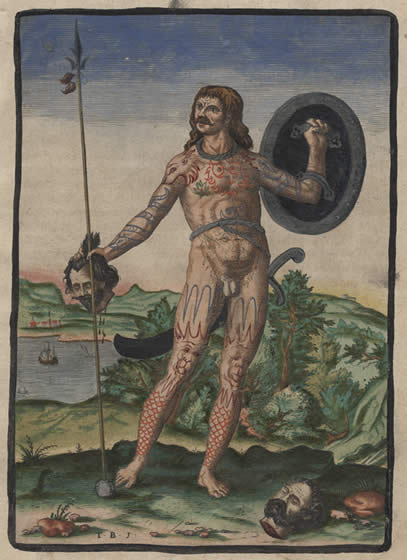 In the 3rd century A.D., Herod of Antioch wrote, "The Britons incise
on their bodies colored pictures of animals, of which they are very
proud." Four hundred years later, Saint Isidore of Seville described the
Scots as being 'marked with various designs by being pricked with iron
needles with ink on them...and the Picts also are thus named because of
the absurd marks produced on their bodies by craftsmen with tiny
pinpricks and juice extracted from their local grasses.'
In the 3rd century A.D., Herod of Antioch wrote, "The Britons incise
on their bodies colored pictures of animals, of which they are very
proud." Four hundred years later, Saint Isidore of Seville described the
Scots as being 'marked with various designs by being pricked with iron
needles with ink on them...and the Picts also are thus named because of
the absurd marks produced on their bodies by craftsmen with tiny
pinpricks and juice extracted from their local grasses.'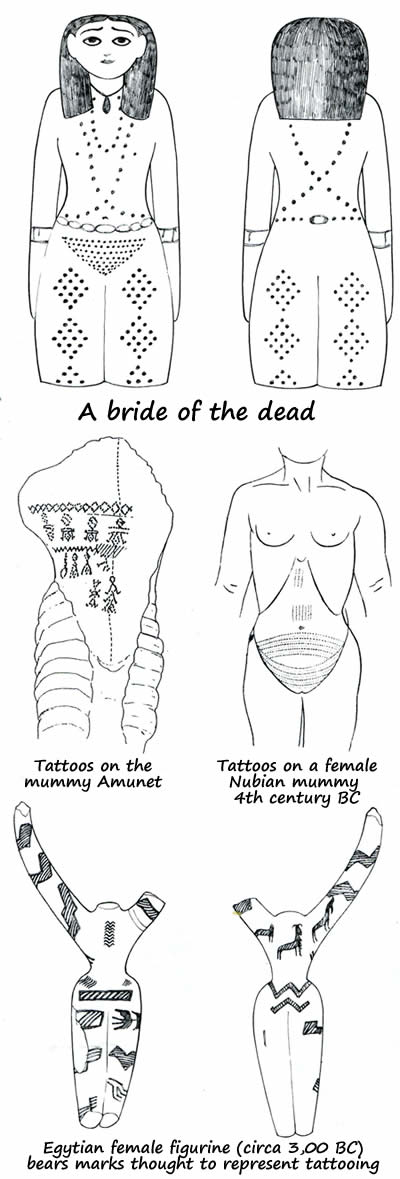 Egypt has long been thought of as the source of our earliest evidence
of ancient tattoos -- mummies dating to 2000 BC. Previously, clay
statuettes had suggested a tattoo culture going back as far as 4000 BC.
The limbs and bodies of the small female figures were etched with what
might have been tattoos. But speculation ended in 1891 with the
discovery in Thebes of the mummified remains of a female displaying
tattoos of various abstract geometric designs. Her tomb identified her
as Amunet, a priestess of the goddess Hathor, the 'cosmic mother'.
Egypt has long been thought of as the source of our earliest evidence
of ancient tattoos -- mummies dating to 2000 BC. Previously, clay
statuettes had suggested a tattoo culture going back as far as 4000 BC.
The limbs and bodies of the small female figures were etched with what
might have been tattoos. But speculation ended in 1891 with the
discovery in Thebes of the mummified remains of a female displaying
tattoos of various abstract geometric designs. Her tomb identified her
as Amunet, a priestess of the goddess Hathor, the 'cosmic mother'. 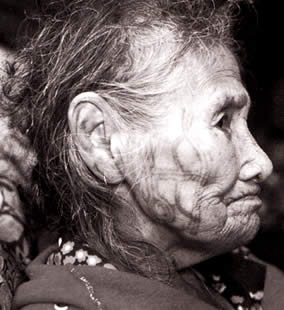 The last tattooed woman of the Yupik people lives on a wind-blown
island in the Bering Strait. Anthropologist, Lars Krutak, has been
studying their tattoo art, and he tells us that here, yet again, it's
the women who have been carrying the tradition that stretches back at
least 2000 years. Ancient carved figurines have been found with
tattoo-like marks, which, if taken at 'face' value, suggest that Arctic
tattooing was practiced at least 3,500 years ago. What's unusual about
the Aleutian Island tattoos is that they're stitched in. It makes sense,
since the women would have been experts in tailoring hides for
everything from parkas to boat covers. Krutak writes:
The last tattooed woman of the Yupik people lives on a wind-blown
island in the Bering Strait. Anthropologist, Lars Krutak, has been
studying their tattoo art, and he tells us that here, yet again, it's
the women who have been carrying the tradition that stretches back at
least 2000 years. Ancient carved figurines have been found with
tattoo-like marks, which, if taken at 'face' value, suggest that Arctic
tattooing was practiced at least 3,500 years ago. What's unusual about
the Aleutian Island tattoos is that they're stitched in. It makes sense,
since the women would have been experts in tailoring hides for
everything from parkas to boat covers. Krutak writes: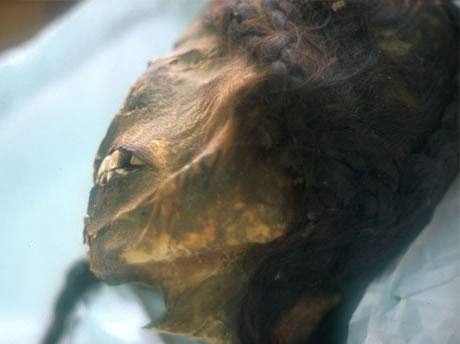
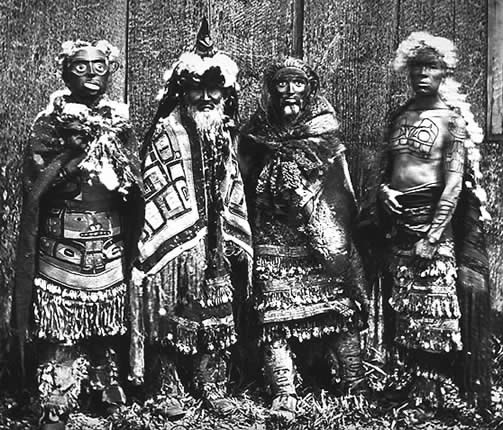
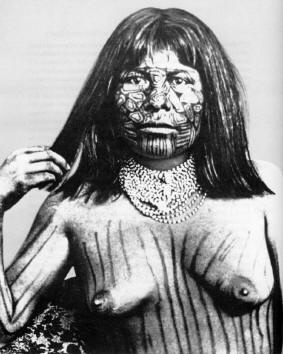 Mythologist, Joseph Campbell, suggests that rituals such as tattooing
were necessary to bring the mythologies alive. He adds that "the effect
was to convert men into angels." Or, into the Greek 'messenger god'
Hermes, who negotiated between the realms of the living and the dead. A
tattoo on the body of an ancient ancestor was often a message
transferring power, not just from one time to another, but from one
reality to another.
Mythologist, Joseph Campbell, suggests that rituals such as tattooing
were necessary to bring the mythologies alive. He adds that "the effect
was to convert men into angels." Or, into the Greek 'messenger god'
Hermes, who negotiated between the realms of the living and the dead. A
tattoo on the body of an ancient ancestor was often a message
transferring power, not just from one time to another, but from one
reality to another.